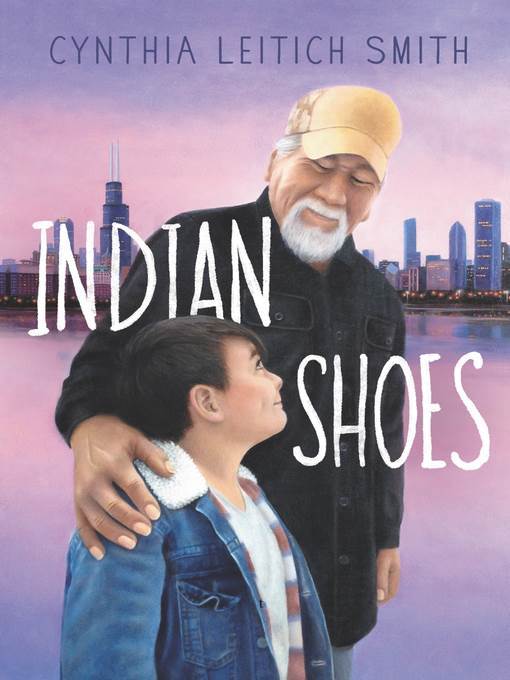
Indian Shoes
فرمت کتاب
ebook
تاریخ انتشار
2020
Lexile Score
820
Reading Level
3-4
ATOS
5
Interest Level
4-8(MG)
نویسنده
MaryBeth Timothyناشر
Heartdrumشابک
9780063049871
کتاب های مرتبط
- اطلاعات
- نقد و بررسی
- دیدگاه کاربران
نقد و بررسی

April 1, 2002
Ray Halfmoon, a Seminole-Cherokee boy living with his grandfather in Chicago, is at the center of Smith's (Rain Is Not My Indian Name) slim collection of six tales. In the title story, Ray tries to take the edge off Grampa's homesickness for his native Oklahoma by buying him a pair of Seminole moccasins, which the two spy in an antique shop. But when he arrives at the store, a librarian offers the shopkeeper more money for the shoes than Ray has to spend. The boy then trades the woman his own hightops for the moccasins (which, says a grateful Grampa, "put me in the mind of bein' back home") and the woman displays the sneakers in her library, labeling them "Cherokee-Seminole Hightops." In other selections, the duo cares for neighbors' pets on Christmas Day, Grampa finds a solution to the dreadful haircut he gives Ray on the day of a big baseball game and the two share a special moment while fishing at night. Though the author affectingly portrays the strong bond between grandson and grandfather, the narrative bogs down with flowery or overwritten passages (e.g., "Ray's and Grampa's breath puffed cloudy as they trudged next door to the Wang home. In the driveway, Mrs. Wang's VW Bug waited to be freed from the snow like a triceratops skeleton embedded in rock"). Kids may have trouble sticking with this collection. Ages 7-10.

May 1, 2002
Gr 3-5-Smith adds her voice to the precious few authors portraying realistic contemporary life for Indian children. Although she tells little of his background, the author uses six vignette chapters to introduce Ray, an affable mixed-blood Cherokee-Seminole boy living in Chicago with his Grampa Halfmoon. With humor, compassion, and ingenuity, Ray trades his own high-tops for some old-time Seminole moccasins for his grandfather, overcomes wardrobe trouble to serve as ring bearer in a family friend's wedding, and harbors a houseful of neighbors' pets during a winter power outage. He wins third place in a local art contest, inspires team spirit for his baseball team with a unique and colorful haircut, and enjoys the quiet splendor of a predawn fishing trip with his grandfather during a visit with relatives in Oklahoma. There are no mystical nature spirits or cathartic history lessons, only the everyday challenges common to any contemporary kid, as experienced by an Indian boy who is firmly grounded in his own family's heritage. With its unadorned portrayal of urban Indian life, Shoes is a good book for any elementary-aged reluctant reader, and a necessity for indigenous children everywhere.-Sean George, St. Charles Parish Library, Luling, LA
Copyright 2002 School Library Journal, LLC Used with permission.

June 1, 2002
Gr. 3-6. In six brief interconnected day-in-the-life vignettes, Ray and Grandpa Halfmoon reflect on their current life in Chicago and call up warm memories of their Cherokee-Seminole roots in Oklahoma. In one story, Ray schemes how to afford the lovely leather moccasins he saw in the antique store, knowing how much his grandfather will love them. In another, Grandpa improvises when the rented suit Ray is to wear for a cousin's wedding arrives without trousers. In a third, Ray and Grandpa return to Oklahoma for a visit and some night fishing, during which Grandpa reminisces about fishing with Ray's father, who is deceased. The stories' strength lies in their powerful, poignant evocation of a cross-generational bond and in the description of the simple pleasures two charming characters enjoy.(Reprinted with permission of Booklist, copyright 2002, American Library Association.)

























دیدگاه کاربران